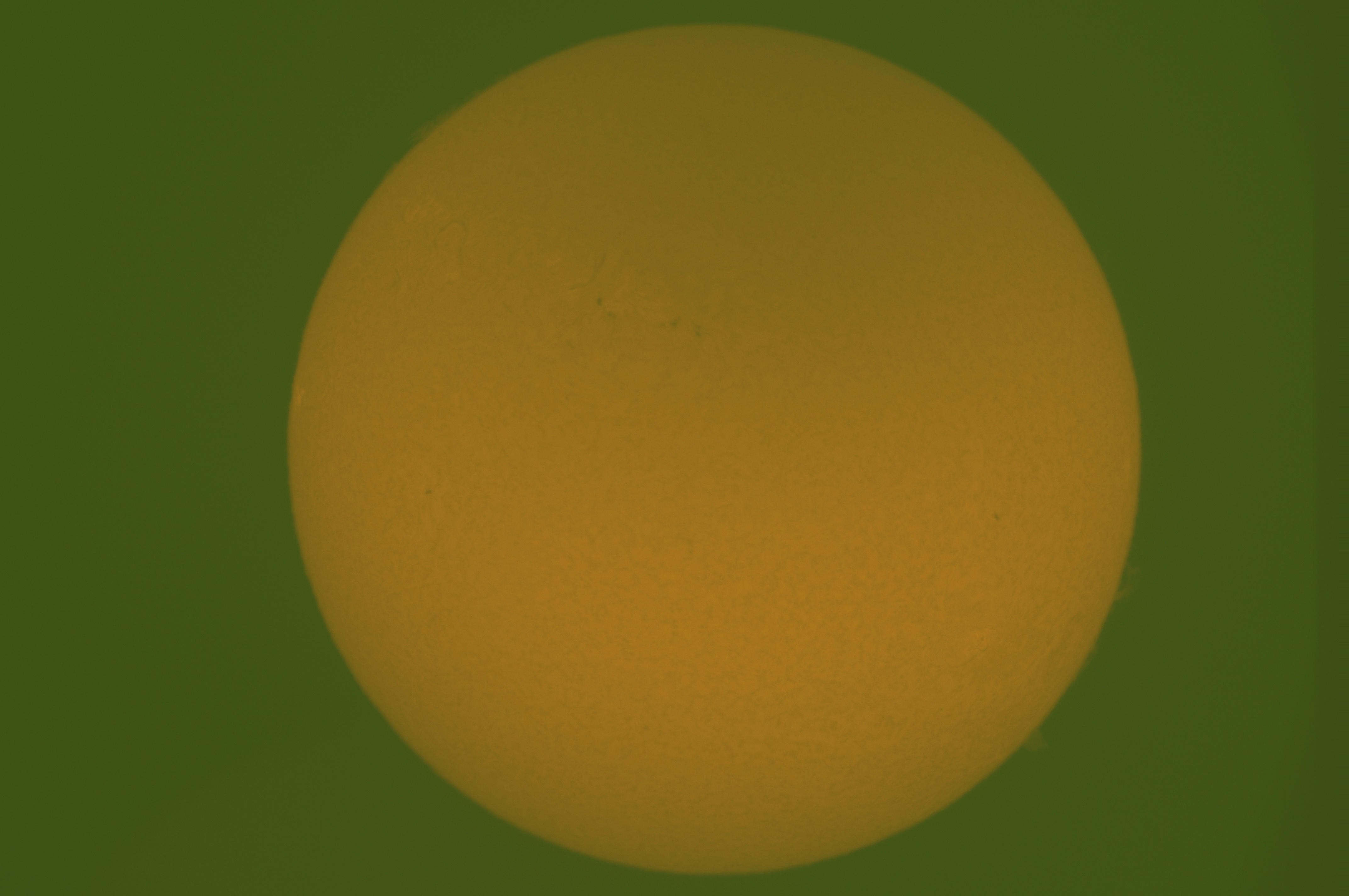Use of a Full Frame camera (Sony A7S*)
for solar H-alpha ?
* partially also valid for the monochrome
STL11000M
Fluorite Perl-Vixen 102/900 refractor,
Coronado SM90+BF30
+ 1.6x Antares 2" barlow
(in order to fill the sensor at best otherwise what would
be the reason for using a full frame !?)
Single frame from
the pool of 70 color mode ARW RAWs in the continuous 30s capture, |
Filename - _DSC7196.JPG Maker Note (Vendor): - Thumbnail: -
|
 |
|
Single JPG from
the continuous pool of 70 shooted in monochrome mode RAWs (continuous
30s capture) Note : only the JPG are monochrome ... the RAWs remain the same, in color ! |
|
Final result (20150510 ~ 8 AM UT) with 103
.ARW RAWs acquired in 1 min
(monochrome mode = do nothing on RAWs)

... transformed in PNGs
then registered with AS!2 "planet gradient
mode", best 80% kept, 50/50 conv.
Finalisation : Wx (Wavelet adjustments,
synthetic flat) , Irfanview (AAC
auto adjust colors)
(click for full size)
My personal conclusion on this almost 2 year study :
The result is interesting but only after
a lot of PC time consuming processing work !
The Sony A7S is 12Mpix but when framing the Sun, about
4Mpix is not used (lateral
empty
borders)
this
reduces the useful area to 8 Mpix.
With
only 1/4 of the 8 Mpixels being "red pixels", the equivalent
true H-alpha resolution is
only about
2 Mpix.
Moreover the IRCut filter of the "unmodified" camera reduces a
lot the sensitivity (~75% !) in H-alpha which results in poor contrast.
Capturing the whole Sun at about 1500 mm
F on a full frame sensor is only a dream !
As with the full frame STL11000M
(I tried in the same setup and I have sold now),
there is a strong inhomogeneity of
H-alpha over the whole solar disk, due to the large angle of the monochromatic
light beam.
Lowering gamma on one original frame shows well the H-alpha inhomogeneity...
I remember that the inhomogeneity
problem was already very slightly visible with a modified for H-alpha
Canon APS-C camera.
With a Full Frame camera (monochrome or
color), it is just worse ...
It could be still interesting to (re)test
recent modified APS-C cameras with standard or even "Bayer matrix pealed"
sensor.
To be compared
with this earlier
picture (I guess I would do better now) done in a 1 min drifting
mode
with the (3 x cheaper BTW) 2
MPixels ASI 174MM which is, after a good year of different
trials, my
choice.

